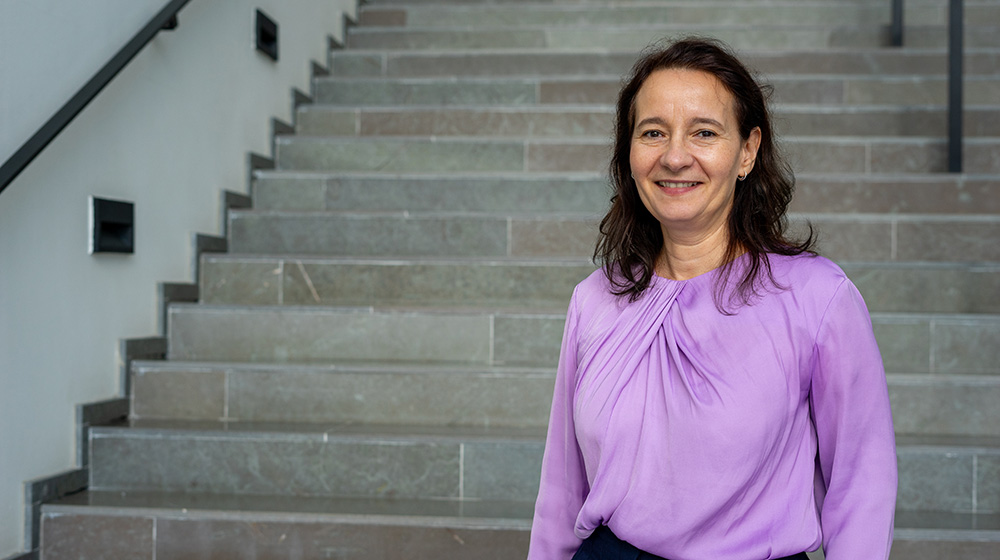Newly appointed professor researches biomarkers for rare diseases

When Cristina Al-Khalili Szigyarto began studying mathematics, her former chemistry teacher back home in Trollhättan protested. It didn’t take long, however, for her to realise that it wasn’t mathematics but biochemistry that she should be studying. In June, she was promoted to Professor of preclinical proteomics.
After conducting research on protein degradation in mitochondria and the regulation of stress responses in yeast, Cristina Al-Khalili Szigyarto came to KTH for a postdoctoral position. She worked for many years on the Human Protein Atlas and the mapping of human proteins. It was there that she developed an interest in more applied research, focusing on developing diagnostic tools for rare diseases.
“Working on the Protein Atlas is like creating a treasure chest – a repository of information about human proteins and tools to study them – waiting to be explored. During that time, a project on muscular dystrophies emerged, where we were able to use everything we had developed to better understand the human body and develop biomarkers,” she says.
A recognition for the research field
Cristina Al-Khalili Szigyarto views her appointment as a professor as a form of recognition for her field of research. The rare diseases she is investigating – muscular dystrophies – affect muscle function in various ways. This umbrella term encompasses around 30 different diseases, nearly all caused by genetic mutations.
Most muscular dystrophies affect children, and some patients do not live beyond the age of 30. Those who live longer often face difficulties in adulthood, such as walking or performing physical activities. In some cases, the disease also affects the heart, which is a muscle. As these diseases are currently incurable, tools are needed to monitor their progression and test potential treatments.
“Research into common diseases, such as cancer and cardiovascular conditions, is easier to conduct because large numbers of observations can be made. Rare diseases, on the other hand, affect fewer people and manifest in varied ways, making them more challenging to research. This necessitates collaboration with researchers from other countries. What’s important to remember is that around 30 million people in Europe are affected by a rare disease,” she says.
Cristina and her research team are collaborating with nearly all researchers in Europe and the United States who are working on muscular dystrophies, as well as with two pharmaceutical companies. These companies are developing gene therapies to treat two types of muscular dystrophy – Duchenne and Limb-girdle – by correcting genetic mutations. Biomarkers are being used to monitor the disease and determine whether the treatment is effective.
Tools to improve care and develop effective drugs
“It's incredibly exciting to work on this – not only because it's challenging, but also because it's such a neglected area. My goal is to contribute tools that will improve care for these patients and help develop effective drugs. For the past two years, we have also been investigating whether we can identify markers in newborns that indicate the presence of the disease before any symptoms appear. The aim is to intervene with treatment immediately, rather than waiting for symptoms to develop,” says Cristina Al-Khalili Szigyarto.
The best part of research is seeing the results for the first time, she says.
“That joy is incredible. It's the same feeling as when you were a child and saw the first snowflakes of autumn.”
In addition to her research, Cristina Al-Khalili Szigyarto teaches several courses and serves as programme director for the Master of Science in Biotechnology. She sees teaching as a way to share her research with students. She also really enjoys working with her colleagues and the way they are collaborating.
“We have excellent cooperation within our department, where we talk to each other, share knowledge, instruments, and ideas. It's a good group with diverse research areas that complement each other,” she says.
Text: Åsa Karsberg
